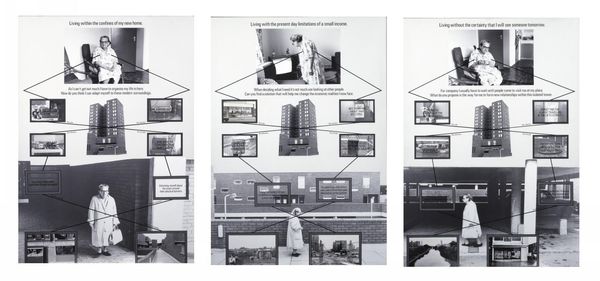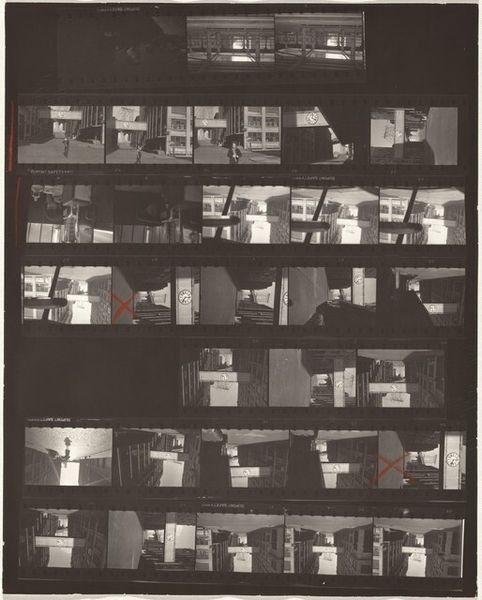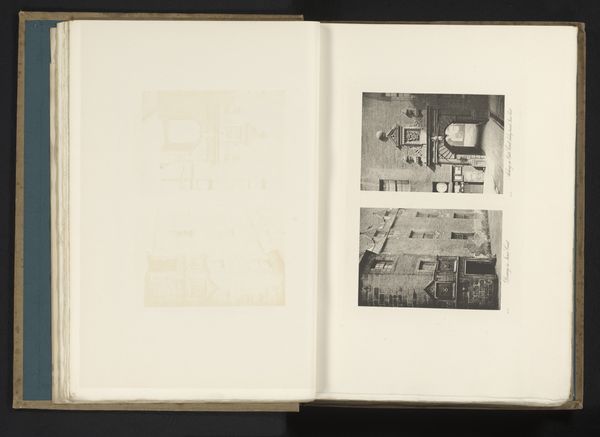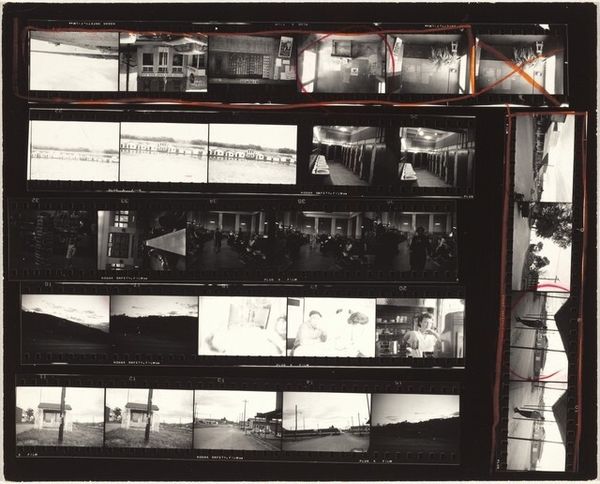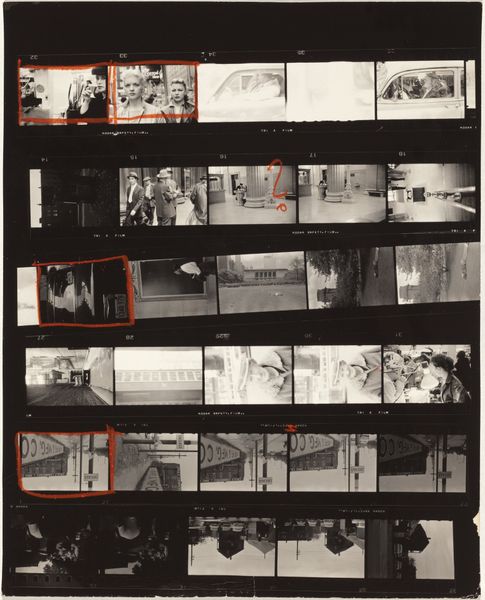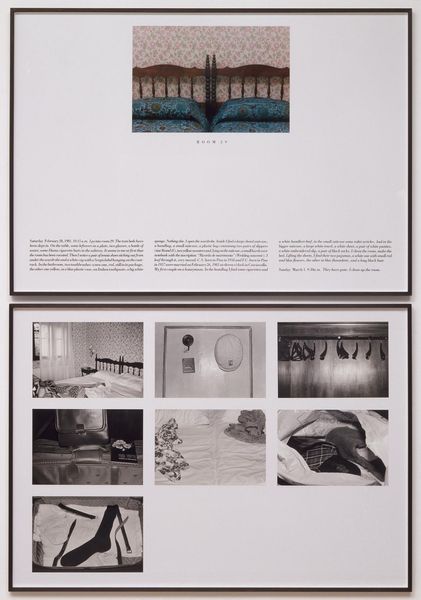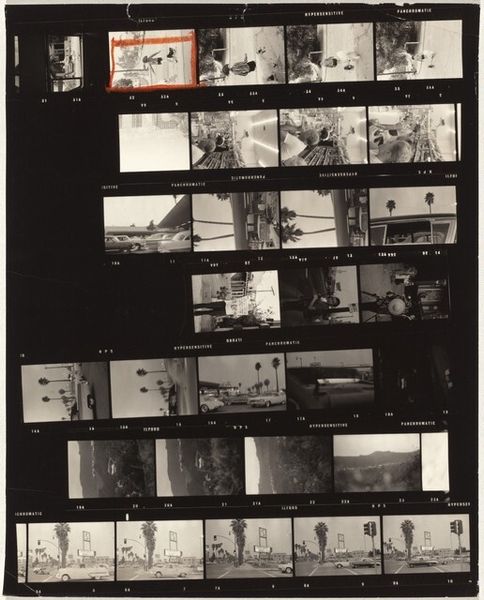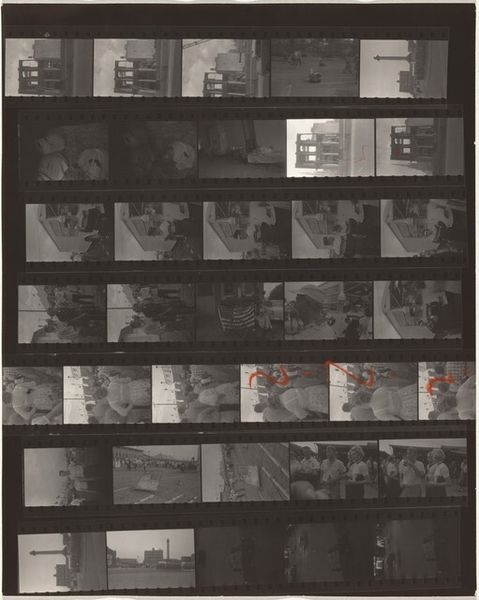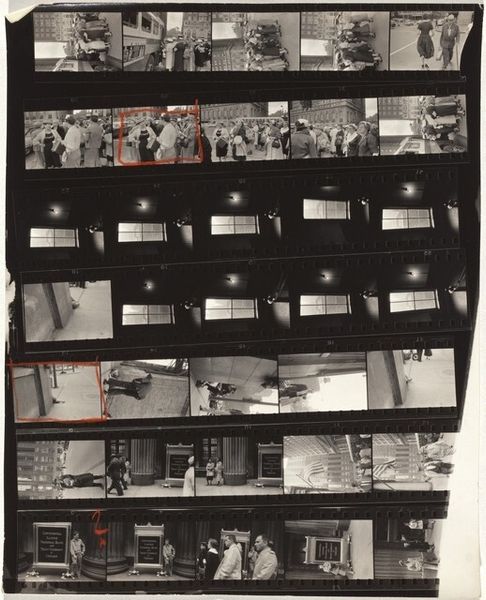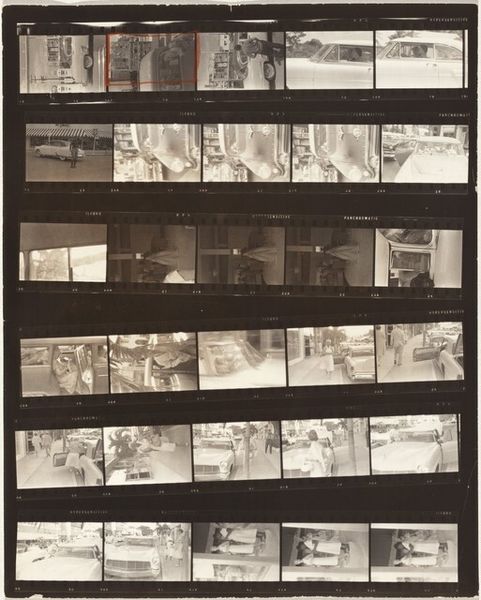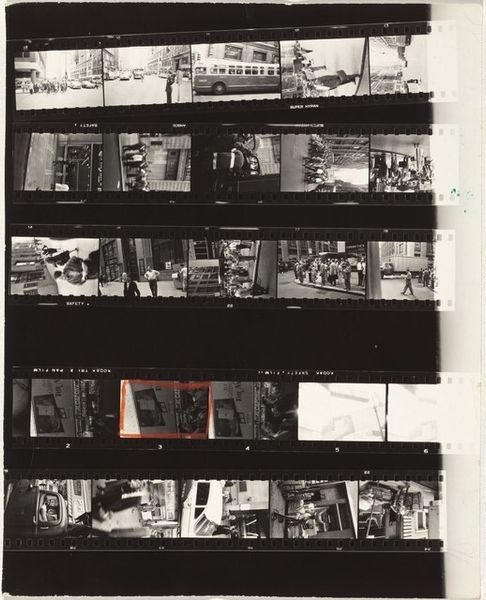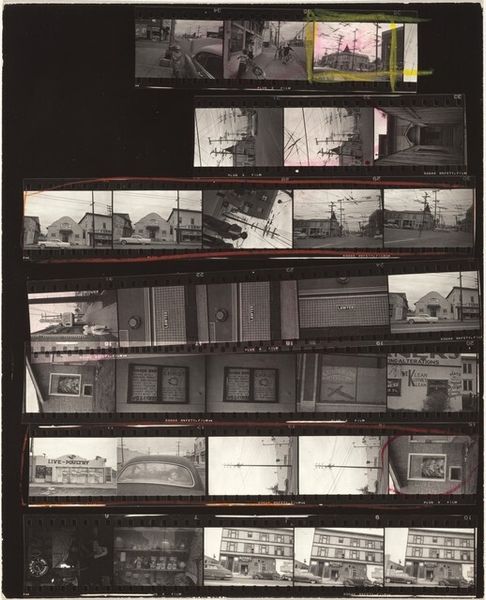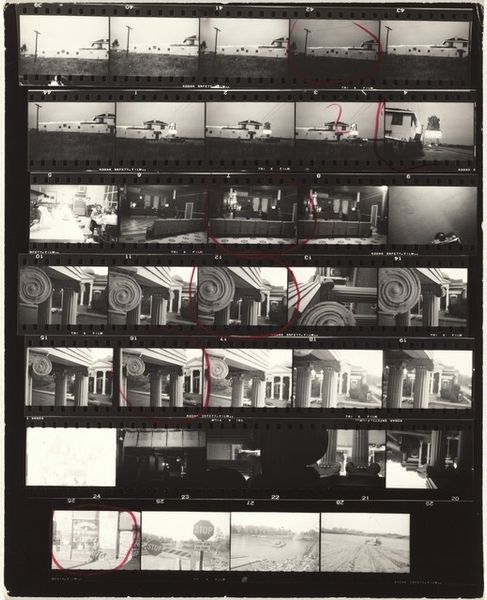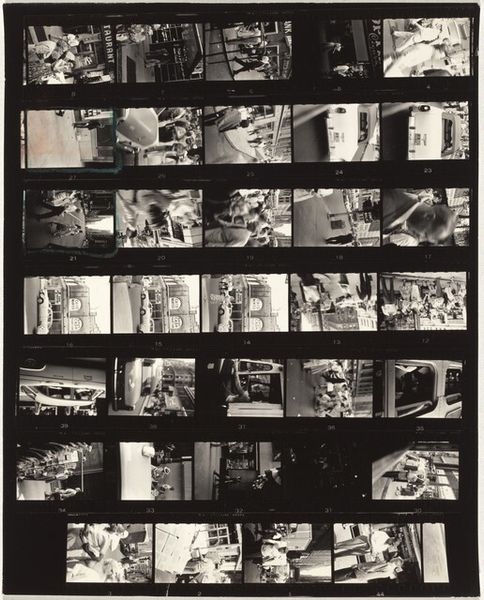
Dimensions: support: 297 x 973 mm
Copyright: © The estate of Ian Breakwell | CC-BY-NC-ND 4.0 DEED, Photo: Tate
Curator: Immediately, I'm struck by the cold, detached feeling this image evokes. The stark, repetitive monochrome panels create a sense of isolation. Editor: That's interesting. This is one of Ian Breakwell's "Six Phototext Sequences." Breakwell, born in 1943, often combined photography and text to explore the everyday and challenge traditional narrative structures. Curator: The pairing of image and text is intriguing, making me consider how this work subverts the viewer's expectations. It creates a distance, prompting us to engage critically. Editor: Right. Breakwell was fascinated by how social institutions and power dynamics shaped our perception. The sequences here, with their fragmented narratives, invite us to question the politics of seeing. Curator: It's as if we're observing a surveillance tape, prompting discussions about the relationship between the individual and the institution. This piece feels incredibly pertinent to today's societal dialogues. Editor: Yes, Breakwell consistently sought to expose the unspoken rules that govern our lives. His work serves as a powerful commentary on the complexities of modern existence, even years after his death.
Comments
tate 3 months ago
⋮
http://www.tate.org.uk/art/artworks/breakwell-six-phototext-sequences-p78491
Join the conversation
Join millions of artists and users on Artera today and experience the ultimate creative platform.
tate 3 months ago
⋮
Six Phototext Sequences by Ian Breakwell is one of the eight printed works in Tetrad Pamphlets Vol.II. Tetrad Pamphlets consists of eight fold-out paper pamphlets in a grey cardboard box. They were printed in an edition of one hundred and twenty five and the Tate copy is unnumbered and unsigned. The pamphlets occupy the middle ground between artist's book and free-standing print work. The box also includes work by Ian Tyson (born 1933), Jerome Rothenberg (born 1931), Richard Johnny John (dates unknown), Tom Phillips (born 1937), Richard Pinkney (born 1938), Donato Cinicolo (dates unknown), Christian Wolff (born 1934) and Valerie Large (dates unknown). They were published by the small London based Tetrad Press, from which they took their name. Tetrad Press also published a number of artist's books and collaborations, as well as an earlier volume of Tetrad Pamphlets. Volume I (Tate P01688-P01697) appeared in 1971, featuring ten works in pamphlet format by Derrick Greaves (born 1927), Tom Phillips, Richard Pinkney and Ian Tyson. Tetrad Press was founded in 1969 by the artist and publisher Ian Tyson for the purposes of developing a new relationship between contemporary art and literature. To begin with Tetrad concentrated on collaborations between visual artists and poets. The first work published was a five page folio, The 17 Horse Songs of Frank Mitchell X-X111 1969-70 (Tate P05258-P05261), a collaboration between Tyson and his close friend the American experimental poet Jerome Rothenberg. The press gradually broadened its scope to include musical scores, books, prose texts, and concrete poetry, as well as works by individual artists. The 1960s had seen a growing interest in the possibilities offered by printmaking techniques, and artists were keen to explore connections between word and image, literature and art. The artist's book offered another medium through which to explore these relationships. As Ian Tyson commented: 'it is partly the sequential nature of the book that interests me, the conception of the pages being each one a facet of the whole and that of the work being slowly revealed as one moves from one to the other.' (Quoted in unpublished Tate manuscript.) Six Phototext Sequences consists of a beige folded card inside which is a four page grey fold-out. The fold-out is printed with six strips of small black and white photographs above which a hand written text by Breakwell is reproduced. The strip photographs show details of everyday environments and the texts describe activities that could be taking place, but which cannot be seen. Breakwell contrasts the banality of the photographed scene with the strangeness of the event described. For instance, above a series of images of the top of an open window Breakwell has written: 'as he listened to the furniture.' Another photographic strip shows walls and roof tops, above which are the words: 'of a man rubbing his throat against the corner of an outside wall.' Like much of Breakwell's work at the time, Six Phototext Sequences investigates 'the relationship between word and image' and 'the surreality of mundane "reality".' (Breakwell quoted in Adams, p.2.) Breakwell was also exploring concepts of personal time and memory and the relationship between private and public experience. He experimented with a wide variety of media, writing fictional texts and diaries, making collages, drawings, tapes and films, and staging events and theatre performances. He exhibited both in Britain and abroad and had retrospective exhibitions at the Third Eye Centre, Glasgow in 1975 and the Institute of Contemporary Art, London in 1977. Breakwell produced one other publication for Tetrad in 1973. Further Reading:Cathy Courtney, Speaking of Book Art: Interviews with British and American Book Artists, California 1999, pp.23-37Some Enquiries and Observations: Ian Granger, Derrick Greaves, Tetrad Press, exhibition brochure, Sunderland Arts Centre, Sunderland 1974Clive Adams, Ian Breakwell: Continuous Diary 1965-1977, exhibition brochure, Institute of Contemporary Art, London 1977 Imogen Cornwall-Jones January 2002
